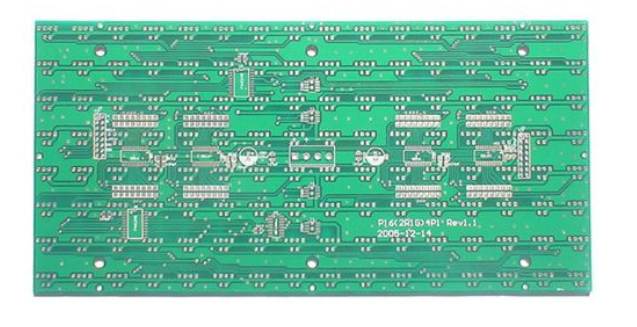Layered blistering of multilayer circuit boards
In the pattern electroplating process method of the multilayer circuit board factory, the circuit pattern is prone to side corrosion during the etching process, so that the tin-lead alloy plating part is suspended and the suspension layer is generated, which is easy to fall off, resulting in the bridging between the wires and the short circuit. The multi-layer circuit board factory adopts the infrared hot-melt process method, which can make the exposed copper surface obtain extremely good protection. However, when used for infrared heat fusion of multilayer circuit boards, due to the high temperature, the delamination and blistering between layers of the multilayer circuit board is very serious, resulting in extremely low yield of the multilayer circuit board. What causes the quality problem of layered blistering of multilayer circuit boards?
Cause of:
(1) Improper suppression causes air, moisture and pollutants to enter. Solution: Multi-layer circuit board factories need to bake and keep dry before lamination and lamination; strictly control the process before and after pressing to ensure that the process environment and process parameters meet the technical requirements.

(2) During the pressing process, due to insufficient heat, too short cycle time, poor quality of the prepreg, and incorrect function of the press, resulting in problems with the degree of curing. Solution: Check the Tg of the pressed multilayer board, or check the temperature record of the pressing process. After pressing the semi-finished product, the multi-layer circuit board factory will bake it at 140°C for 2-6 hours, and continue the curing process.
(3) Poor blackening treatment of inner circuit or surface contamination during blackening. Solution: The multi-layer circuit board factory strictly controls the process parameters of the oxidation tank and the cleaning tank of the blackening production line and strengthens the inspection of the surface quality of the board. Try the double-sided copper foil.
(4) The inner layer board or prepreg is contaminated. Solution: The work area and storage area need to strengthen the cleaning management; reduce the frequency of hand-handling and continuous plate removal; various bulk materials need to be covered to prevent contamination in the stacking operation; when the tool pin must be lubricated and out of stock surface treatment should be implemented Separate from the lamination operation area and cannot be carried out in the lamination operation area.
(5) Insufficient glue flow. Solution: The multi-layer circuit board factory should appropriately increase the pressure intensity of the pressing; appropriately slow down the heating rate and increase the glue flow time, or add more kraft paper to ease the temperature rise curve; replace the prepreg with higher glue flow or longer gel time; check the steel plate Whether the surface is smooth and free of defects; check whether the length of the positioning pin is too long, causing the heating plate not to be tightly attached and insufficient heat transfer; check whether the vacuum system of the vacuum multi-layer press is in good condition.
(6) Excessive glue flow-almost all glue contained in the prepreg is extruded out of the board. Solution: The multilayer circuit board factory should properly adjust or reduce the pressure used; the inner layer board before pressing needs to be baked and dehumidified, because the moisture will increase and accelerate the amount of glue; switch to a lower amount of glue or gel time Shorter prepreg.
(7) In the case of non-functional requirements, the inner layer board minimizes the appearance of large copper surfaces (because the bonding force of the resin to the copper surface is much lower than the bonding force of the resin to the resin). Solution: Multilayer circuit board factories try to etch away useless copper surfaces.